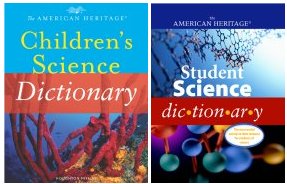Lessons from a Lonely Tortoise Additional Information
For more information about why Lonesome George may not be alone after all, and details about how you can help, see www.yale.edu/yibs/lonesome_george.htm (Yale Institute for Biospheric Studies).
Learn more about how the Charles Darwin Foundation and Galápagos National Park Service have removed invasive goats from tortoise-populated islands at www.darwinfoundation.org/en/our-work/featured-projects/project-isabela (Charles Darwin Foundation).
Discover why the Galápagos Islands are known as a World Heritage Site and see a gallery of pictures from the islands at whc.unesco.org/en/list/1 (United National Educational, Scientific, and Cultural Organization).
In April, 2007, an international conservation event followed 11 leatherback turtles as they “raced” toward feeding areas south of the Galápagos Islands. See the results, and learn more at www.greatturtlerace.com/(The Great Turtle Race).
For general information and resources about tortoises, check out en.wikipedia.org/wiki/Tortoise(Wikipedia).
For more information about the Galápagos Islands, go to en.wikipedia.org/wiki/Galapagos(Wikipedia).
Sohn, Emily. 2004. Alien invasions. Science News for Kids (May 12). Available at http://www.sciencenewsforkids.org/2004/05/alien-invasions-2/.
Teachers, for helpful lesson plans, see www.galapagos.org/schools.html
Books recommended by SearchIt!Science:
![[book]](https://www.sciencenewsforstudents.org/wp-content/uploads/2019/11/a1539_b1430.jpg) |
Galapagos Means Tortoises
Meet the native animals of the Galápagos Islands, including giant tortoises, blue-footed boobies, and land iguanas. Meet blue-footed boobies that “prance/and dance/and retreat/and advance” as they exchange gifts and share responsibility for raising their young. Discover two kinds of iguanas: land iguanas and marine iguanas. Marine iguanas eat seaweed and change color “when they play the mating game/and do not want to look the same.” Thirteen unique species live on the islands. Meet them all in this rhyming book. An author’s note reveals additional information about the “Islands of Enchantment.” |
![[book]](https://www.sciencenewsforstudents.org/wp-content/uploads/2019/11/a1539_b227.jpg) |
The Galapagos Tortoise
The Galápagos tortoise is perhaps the largest of all land tortoises. It weighs as much as 681 pounds. These giant tortoises live longer than any other land animal. But what else do we know about these animals? How smart are they? What do they eat? What is under their shells? This book answers these questions and more, providing information about the lives, habitats, and behaviors of these giant reptiles. Color photographs and drawings, a glossary, an index, and a list of information sources complete the book. |
![[book]](https://www.sciencenewsforstudents.org/wp-content/uploads/2019/11/a1539_b3359.jpg) |
And Then There Was One: The Mysteries of Extinction
At the beginning of the year 2000, scientists estimate that there were 1 million fewer species of plants and animals on Earth than there were at the beginning of the 1900s. Why is this happening? Whose fault is it? Some creatures, such as the dinosaurs, become extinct because of natural causes. Others, like beavers or the Steller’s sea cow, have been hunted or trapped until they have all but disappeared. Still others, such as the water birds of the Florida Everglades, are threatened because people have taken over or destroyed their habitat. Although rare, there are some successful recoveries of almost-extinct species. In 1941, for example, there were only 16 whooping cranes. Today, their population numbers more than 200. Illustrated with black-and-white drawings, this book covers cycles of life on Earth, specific creatures that have become extinct or are endangered, and preservation efforts. An index is included. |
Power Words
DNA Short for deoxyribonucleic acid. The material that makes up the genes and that is found in all cells DNA controls the function of all the cells in the body. DNA in the
body consists of two thread-like strands that are linked together in the shape of a double helix.
endangered species A plant or animal species existing in such small numbers that it is in danger of becoming extinct. An organism often becomes endangered because of destruction of its native habitat.
extinct No longer existing or living. Plant and animal species become extinct for many reasons, including climate change, disease, destruction of habitat, and local or worldwide natural disasters. The great majority of species that have ever lived are now extinct.
Copyright © 2002, 2003 Houghton-Mifflin Company. All rights reserved. Used with permission.
